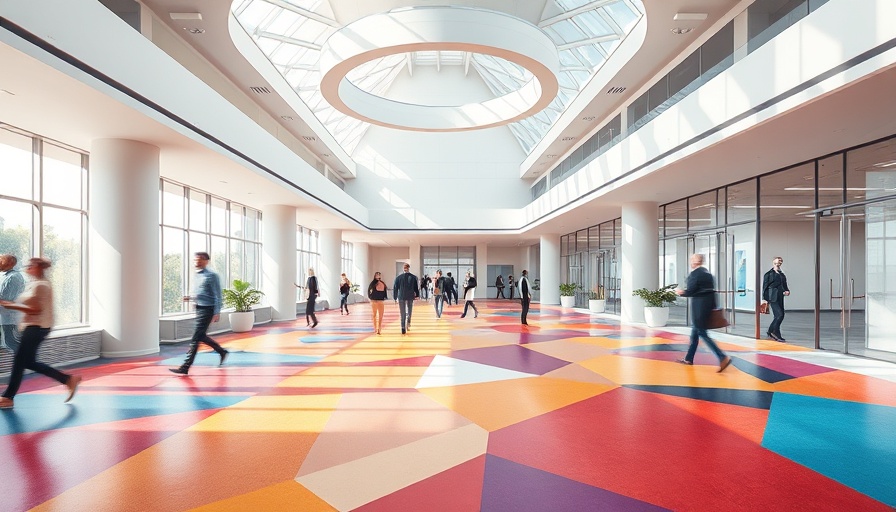
Transforming Learning Spaces: The Power of Design
In the heart of the Czech Republic, Atelier 6 has embraced the art of education reform with colorful floor graphics that not only brighten up the environment but also stimulate the minds of young learners. This innovative design approach transforms a traditional school space into a dynamic learning hub, encouraging creativity and interaction among students. The vibrant graphics not only enhance the aesthetic appeal but also serve practical functions, guiding students through different areas and activities within the school.
Connecting Color and Learning
Studies show that colors can significantly influence mood and cognitive functions. For digital nomads and remote workers, this transformation implies that even our workspace designs can affect productivity and creativity. Just as these floor graphics provide orientation and engagement for young students, thoughtful design choices can create an inspiring atmosphere for remote workers. Utilizing colors strategically in a workspace can promote concentration, reduce fatigue, and elevate creative thinking—benefits that are essential for anyone working from home or on the go.
Designing for Ergonomics: The Science of Space
With a background in ergonomics, it's essential to consider how the layout and design elements within a workspace can impact physical well-being. Just as Atelier 6 carefully crafts their designs to cater to the needs of students, digital nomads should pay attention to their own environments. Ergonomic furniture that supports the body, paired with vibrant colors or stimulating visuals, can enhance comfort and motivation. For instance, positioning your desk near a window and integrating color through art or plants can create an inviting and productive atmosphere.
Creating an Engaging Atmosphere
The choice of floor graphics in the Czech school exemplifies how environmental factors can affect a learning atmosphere. For remote workers, fostering engagement at home might involve creating personal spaces that reflect individuality while also prioritizing functionality. Incorporating elements that resonate personally—like inspirational quotes, unique designs, or even floor cushions—can turn a mundane corner into an energizing workspace.
Future Trends: The Evolution of Workspaces
As more people adopt remote work lifestyles, the trends in workspace design will continue to evolve. We can expect to see a greater integration of wellness factors into workspaces—especially those influenced by nature and psychophysical benefits. Drawing inspiration from projects like the one by Atelier 6 can guide individuals in reimagining their environments for improved results. Expect innovations that blend technology, ergonomic design, and artfulness to emerge as essential components of workspaces that support both comfort and creativity.
Actionable Takeaways for Digital Nomads
Incorporating enticing visuals and ergonomically sound furniture into your workspace can be a game-changer. Strategies such as occasional rearrangement, integration of plants, and personalization of your environment can make a significant difference in your productivity. Experiment with different arrangements and designs until you find the combination that fuels your focus and creativity. Create a space that speaks to you personally—this is paramount to not just working effectively but enjoying the work you do.
Ultimately, the colorful floor graphics in the Czech Republic’s school represent a broader trend in design that highlights the importance of atmosphere, engagement, and functionality. Adopt these principles and watch your workspace transform into a hub of inspiration and efficiency.
 Add Row
Add Row  Add
Add 




Write A Comment